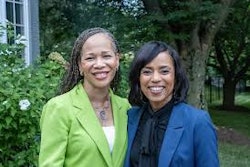Every day, institutions of higher education ask marginalized people to participate in their own oppression. Maybe it’s time we stop.
We are asked to represent diversity, but we are not given meaningful seats at the tables of power. We are told to meet (or exceed) the same metrics as our straight White male colleagues, but, even when we do, the institution betrays us.
Carly Parnitzke Smith and Jennifer J. Freyd explain, “Institutional betrayal occurs when an institution causes harm to an individual who trusts or depends upon that institution.” The roots of this lie in the structures that fail diverse staff over and over. For example, the push to reopen campuses this fall in spite of COVID-19 ignores the multiple vulnerabilities faced by university staff. The pandemic has reduced academic women’s scholarly production and threatened contingent faculty, disproportionately women, and programs like Women & Gender Studies and Ethnic Studies.
Young students may be less likely to die of COVID-19, but many faculty are over 60. Maintenance staff and dining hall workers, disproportionately people of color, are at high risk because their jobs involve sustained indoor contact with students. Yet many institutions seem fully committed to bringing folks back to campus, regardless of the risks.
Faculty at risk for marginalization in the university due to gender, race, ethnicity, sexuality, ability, and age face institutional betrayals throughout their careers. The 2019 HERI survey found that “faculty of color and female faculty disproportionately experience stress due to discrimination . . .” The hashtag #BlackInTheIvory documents stories of discrimination and marginalization of thousands of Black scholars. The 2019-2020 AAUP Annual Report on the Economic Status of the Profession found that faculty women’s salaries are still only 81.4 percent of men’s.
What Should We Stop Doing?
First, we need to decolonize our minds. Higher education teaches us it is a meritocracy. In recent years, it tells us it wants to be a place of diversity and equity, and our inclusion is evidence of its commitment. It seduces us with diversity statements, diversity strategic plans, diversity trainings, and diversity committees that convince us it will grant us an equal seat at the table if we just do our part. We have to stop believing that and stop participating in it.















